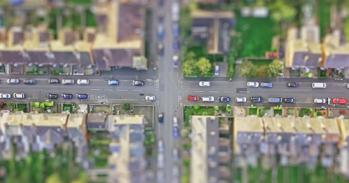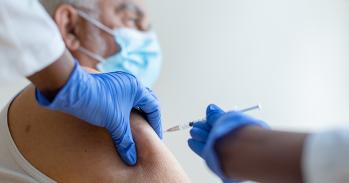
Study suggests that TV appearances by Bolsonaro led to millions more Brazilians ignoring social distancing in the days following broadcast.
Study suggests that TV appearances by Bolsonaro led to millions more Brazilians ignoring social distancing in the days following broadcast.
The attitude of a leader can have a significant and possibly devastating impact on individual health and the healthcare systems of a nation
Tiago Cavalcanti
Jair Bolsonaro’s public undermining of pandemic prevention efforts reduces social distancing in the parts of Brazil where his voter base is strongest, according to a new study using location data from over 60 million phones.
Economists used electoral data and anonymised geo-location from devices across Brazil to investigate whether the president’s outspoken anti-quarantine attitude influenced numbers of citizens staying at home to stop coronavirus spread.
Researchers from the University of Cambridge and Sao Paolo School of Economics-FGV found that municipalities which came out strongly for Bolsonaro in the last election have seen much higher levels of movement and travel among the population during February and March.
Additionally, in the days immediately after Bolsonaro’s televised dismissals of COVID-19 mitigation – e.g. publicly defying quarantine guidance or calling for schools to reopen – Brazil’s social distancing fell in general, and fell much more sharply in pro-Bolsonaro areas.
“Our research suggests that statements on public health behaviour from political leaders are taken seriously by their followers, regardless of how scientifically accurate they are, or how damaging they might be,” said Dr Tiago Cavalcanti, study author from Cambridge’s Faculty of Economics.
“Bolsonaro actively challenges the regulations imposed by sub-national governments to stem the coronavirus tide. He dismisses WHO recommendations and even those of his own minister of health, who he has recently fired.”
“Using big data research, we see the president’s attitude play out at a population level. Brazil is a polarized nation with a populist leader. The patterns we see in Brazil could be echoed in nations with a similar political situation, such as the United States,” he said.
Cavalcanti and his colleagues Dr Nicholas Ajzenman and Dr Daniel Da Mata looked at the percentage of mobile phones that remained within a 450-metre radius of their home location between February 4 and April 7 2020.
They compared this “social distancing index” with the voting record of each of Brazil’s 5,570 municipalities, in particular whether Bolsanaro received more or less than 50% of the vote in the first round of the 2018 election.
Social distancing has gone up across Brazil since the contagion began. In the top 3% of cities with the highest Bolsonaro vote counts*, such as Ascurra in Santa Catarina and Nova Santa Rosa in Parana, this increase was an average of 24 percentage points.
However, in cities at the bottom of Bolsonaro’s support spectrum*, such as Paricoa in Alagoas and Irapuan Pinheiro in Ceara, social distancing was much higher: a 31 percentage point increase.
The study suggests that, on average during February and March, the cities where support for Bolsonaro is highest had levels of social distancing that were almost 30% lower than cities where Bolsonaro has very little support.
The economists also analysed two key televised appearances by Bolsonaro in March, during which he openly disparaged efforts to control the pandemic.
The first was on March 15, when Bolsonaro – suspected at the time of carrying COVID-19 – appeared at a supporters rally in Brazilia, flaunting public health guidelines by taking selfies and doling out fist bumps in the throng.
The second was on March 24. In an official presidential pronouncement he called for schools to reopen nationwide, and criticized Brazilian media for too much reporting on the pandemic in Italy, suggesting he would only get “a little flu” at worst from COVID-19.
The research shows how both these appearances caused social distancing levels to drop in the ten days after each event when compared to the ten days leading up them. The drop was particularly significant in municipalities with high numbers of Bolsonaro voters.
In fact, Cavalcanti suggests that, based on their data, a rough calculation for the effects of the March 24 appearance sees approximately one million additional Brazilians across the nation straying more than 450 metres from their home on each of the ten days following the televised speech.
“Leadership matters,” said Cavalcanti. “The attitude of a leader can have a significant and possibly devastating impact on individual health and the healthcare systems of a nation.”
“When Bolsonaro minimises the pandemic, we see significant increases in what is now risky behaviour within large sections of the Brazilian population.”
“As coronavirus cases and fatalities continue to rise across Brazil, the behaviour of its leader may be having a very real and dangerous effect,” he said.
The researchers also found that Bolsonaro’s televised appearances, and the press coverage that ensued, much of it negative, was linked to a more significant drop in social distancing in areas with “high media access”*.
The team calculated the overall change in Brazil’s social distancing during the period for which they have data. In early February, before the pandemic took hold, around 20% of the Brazilian population stayed within 450 metres of their house. By early April, this had increased to around 53%.
The researchers worked with technology company In Loco to produce the phone data analysis, and the complete findings are published as a Cambridge-INET working paper here: covid.econ.cam.ac.uk
Notes:
* Top 3% of cities for Bolsonaro support had an average Bolsonaro vote of 82% in the first round of the 2018 elections.
* The bottom 3% of cities for Bolsonaro support had an average Bolsonaro vote of 5% in the first round of the 2018 elections.
* “High media access” is defined as municipalities in the top 25% nationally for average internet penetration, plus at least one local TV broadcaster.
How you can support Cambridge's COVID-19 research effort

The text in this work is licensed under a Creative Commons Attribution 4.0 International License. Images, including our videos, are Copyright ©University of Cambridge and licensors/contributors as identified. All rights reserved. We make our image and video content available in a number of ways – as here, on our main website under its Terms and conditions, and on a range of channels including social media that permit your use and sharing of our content under their respective Terms.




